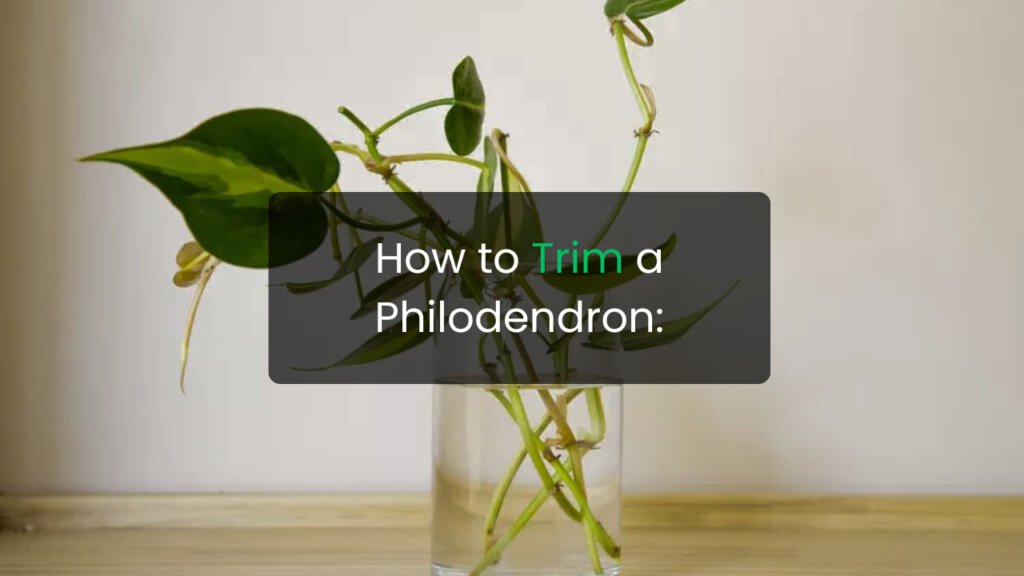Philodendrons are among the most popular indoor plants because of their lush foliage and easy care routine. However, over time they can grow long, leggy, or uneven. Trimming your philodendron helps maintain its shape, encourage new growth, and keep the plant healthy. Whether you have a climbing philodendron or a self-heading variety, proper pruning is an essential part of its care.
Why Trimming is Important
Trimming helps control the size of your philodendron and prevents it from becoming too overgrown. It also removes dead, yellow, or damaged leaves that can drain the plant’s energy. Regular pruning allows the plant to focus on producing new, vibrant growth and keeps it looking tidy.
Key Benefits of Trimming:
- Promotes bushier and fuller growth
- Prevents leggy or uneven vines
- Removes diseased or yellowing leaves
- Improves air circulation around the plant
When to Trim Your Philodendron
The best time to trim a philodendron is during its active growing season, usually in spring or early summer. During this period, the plant recovers quickly and produces fresh shoots. Avoid trimming heavily in winter since the plant’s growth slows down.
Tools You Will Need
Before trimming, make sure you have:
- Sharp and clean pruning shears or scissors
- Rubbing alcohol or disinfectant (for cleaning tools)
- Gloves (optional, since philodendron sap can irritate skin)
Step-by-Step Guide to Trimming a Philodendron
- Inspect the Plant
Look for yellow, brown, or damaged leaves and overgrown vines. These are the main areas that need trimming. - Sterilize Your Tools
Wipe your pruning shears with rubbing alcohol before cutting to prevent the spread of disease. - Trim Dead or Damaged Leaves
Cut leaves close to the base of the stem. Removing unhealthy parts helps the plant focus on healthy growth. - Shape the Plant
For climbing philodendrons, cut long vines just above a leaf node (the small bump where a new leaf grows). This encourages new branching. For self-heading varieties, remove excess side leaves to maintain a balanced shape. - Avoid Over-Trimming
Never remove more than one-third of the plant at a time. Over-pruning can stress the plant and slow down new growth. - Dispose of Cuttings Properly
Throw away damaged leaves, but you can propagate healthy cuttings in water or soil to grow new plants.
Aftercare Tips
- Water Moderately: After trimming, water the plant lightly and avoid overwatering.
- Provide Bright, Indirect Light: This helps your philodendron recover quickly.
- Add Fertilizer: A balanced houseplant fertilizer can support new growth after pruning.
Common Mistakes to Avoid
- Using dull or dirty tools that can damage stems
- Cutting too close to the base or removing too much foliage
- Trimming during dormancy or winter months
- Ignoring yellow leaves or dead stems for too long
FAQs
How often should I trim my philodendron?
You can trim your philodendron every few months or whenever it starts looking overgrown or leggy.
Can I propagate cuttings after trimming?
Yes. Place healthy stem cuttings in water or soil, and they will develop roots in a few weeks.
Will trimming make my philodendron grow faster?
Yes, trimming stimulates new growth by redirecting energy to healthy stems and leaves.
What happens if I don’t trim my philodendron?
The plant may become too leggy, with fewer leaves and weaker stems, affecting its overall appearance and health.
Should I trim yellow leaves right away?
Yes, yellow or brown leaves should be removed promptly to prevent decay and encourage fresh growth.
Final Thoughts
Learning how to trim a philodendron is one of the easiest ways to keep your plant looking vibrant and healthy. With regular pruning, your philodendron will stay full, lush, and attractive year-round. By following these simple steps and care tips, you’ll not only enhance its appearance but also encourage strong and continuous growth.





